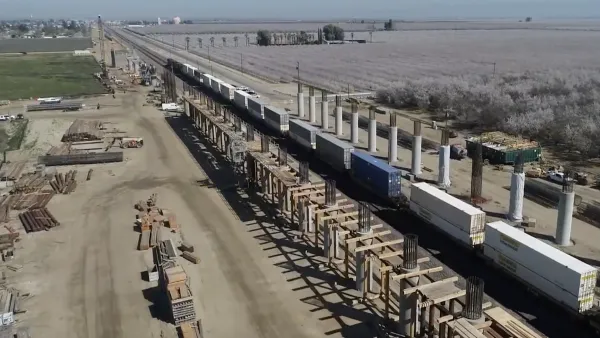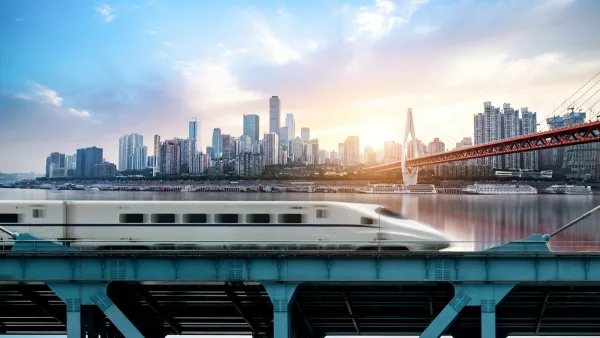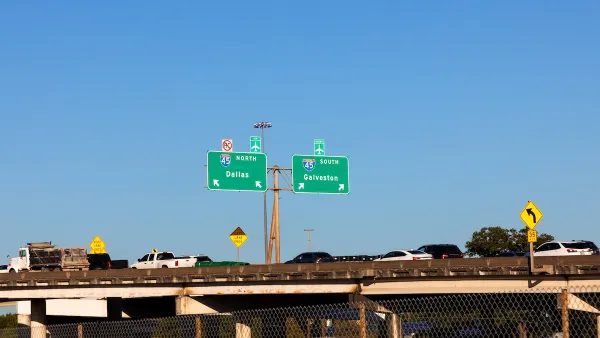The $8 billion in stimulus funds allocated to high speed rail marks a turning point in a road-airport dominated U.S. transportation network, but the politics of allocating the funds may prevent results needed to showcase HSR.
"High-speed rail has emerged as the cornerstone of Obama's ambitious attempt to remake the nation's transportation agenda, which for half a century has focused primarily on building highways and roads. Nearly half of the $48 billion in stimulus money for transportation projects will go toward rail, buses and other non-highway projects, including $1.3 billion for Amtrak and its successful rapid rail service, Acela. The Transportation Department also would receive $2 billion more under Obama's proposed 2010 budget, most of it for rail and aviation.
The money ($8 billion in stimulus money and $5 billion more over the next five years in the administration's proposed transportation budget) represents the first major step toward establishing a genuine high-speed train network in the United States and has sparked a stampede among states, advocacy groups and lobbyists who are not accustomed to this level of funding.
But experts and government officials caution that despite the billions, the amounts are still not nearly enough to pay for the kind of sleek "bullet train" systems that crisscross Europe and Japan at speeds of 200 mph or higher. The California project, for example, would cost an estimated $45 billion, including $9 billion in state bonds that voters approved last year."
"It sounds like a lot of money to Americans, but it's really just a start," said James P. RePass, president of the National Corridors Initiative, a nonprofit rail advocacy group.
"The next step is doling out the money. The Federal Railroad Administration, which distributed $30 million for similar grants last year, is scrambling to develop guidelines for the program within the next six weeks, officials said."
Thomas Simpson, executive director of the Railway Supply Institute, which represents companies that build and maintain rail lines, said the Obama administration faces a choice between spreading the $8 billion around the country or focusing on a few large-scale projects to serve as showcases for high-speed rail. He noted that France's storied TGV high-speed rail service began in 1981 with a single line, between Paris and Lyon."
Thanks to David Underwood
FULL STORY: High-Speed Rail Drives Obama's Transportation Agenda

Analysis: Cybertruck Fatality Rate Far Exceeds That of Ford Pinto
The Tesla Cybertruck was recalled seven times last year.

National Parks Layoffs Will Cause Communities to Lose Billions
Thousands of essential park workers were laid off this week, just before the busy spring break season.

Retro-silient?: America’s First “Eco-burb,” The Woodlands Turns 50
A master-planned community north of Houston offers lessons on green infrastructure and resilient design, but falls short of its founder’s lofty affordability and walkability goals.

Test News Post 1
This is a summary

Analysis: Cybertruck Fatality Rate Far Exceeds That of Ford Pinto
The Tesla Cybertruck was recalled seven times last year.

Test News Headline 46
Test for the image on the front page.
Urban Design for Planners 1: Software Tools
This six-course series explores essential urban design concepts using open source software and equips planners with the tools they need to participate fully in the urban design process.
Planning for Universal Design
Learn the tools for implementing Universal Design in planning regulations.
EMC Planning Group, Inc.
Planetizen
Planetizen
Mpact (formerly Rail~Volution)
Great Falls Development Authority, Inc.
HUDs Office of Policy Development and Research
NYU Wagner Graduate School of Public Service




























